Where Gumbo Was (#340)
This time Gumbo spent a pleasant few days in Bergamo, some 50 km north-east of Milan in the foothills of the Italian Alps. Congratulations to PortMoresby, George G and Roderick Simpson who correctly guessed this week's destination.
Bergamo consists of two parts: the lower and the upper city. The photo at the top was taken in the lower part, with the upper city on the hillside in the background. There is plenty to see in both locations.
The next two photos show different views of the central square, the Piazza Cavalieri di Vittorio Veneto, in the lower town.
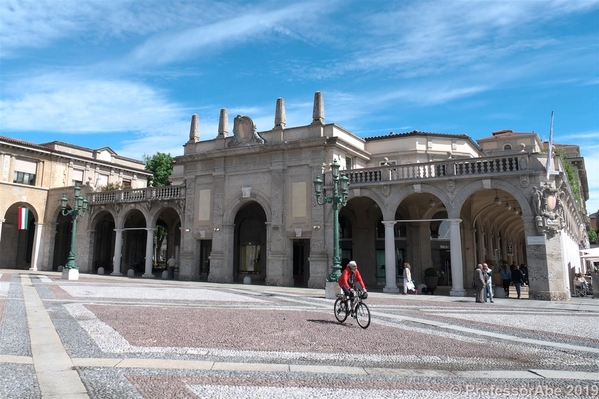
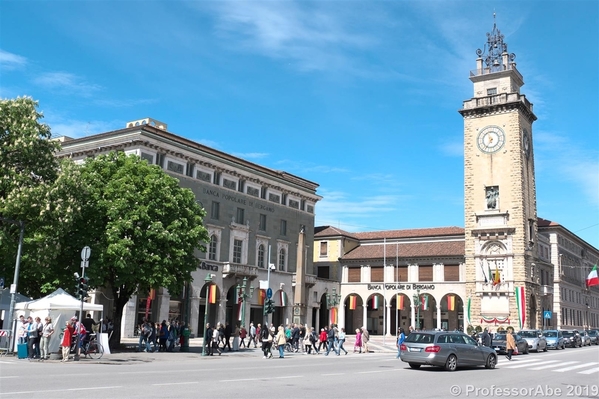
The tower in the second shot is the Torre dei Caduti, commemorating the fallen of the first World War.
Below is a photo of the Porta Nuova, the 'New Gate' (dating from the 1830s), just a short distance away. Actually, this is only one half of it – there is an identical Greek temple-like structure on the other side of the road. Apparently, an iron gate once linked the two halves.
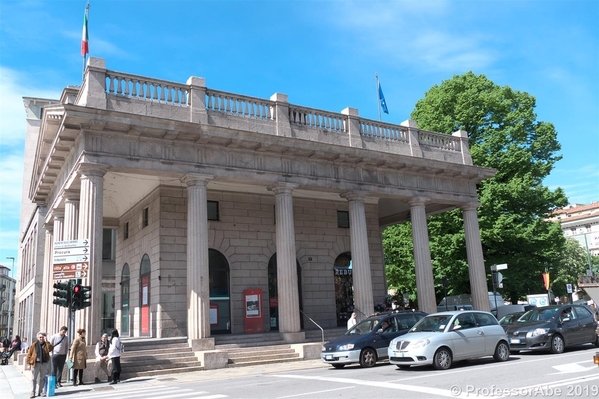
Behind the central square are some colonnaded arcades which are pleasant to wander through.

The Palazzo della Procura della Repubblica, the Palace of Justice, is also in this area.
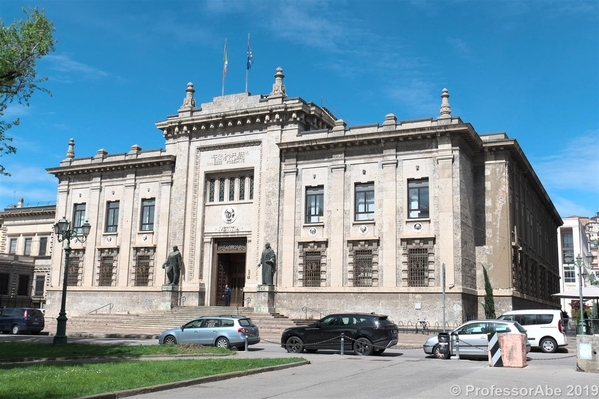
This being Italy, Bergamo has its fair share of churches. Below are photos of two particularly attractive ones in the lower town (the Church of Saints Bartolomeo and Stefano and the Church of Santa Maria Immacolata delle Grazie, respectively).
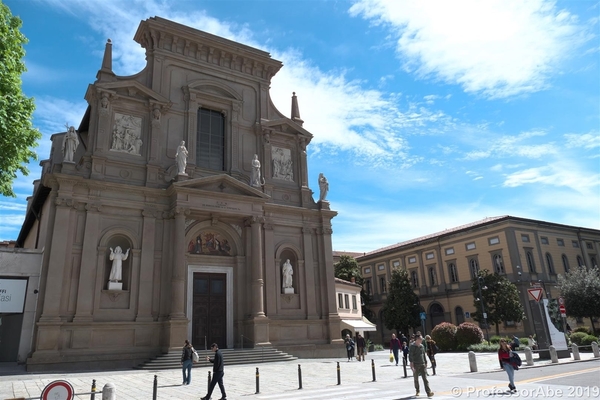
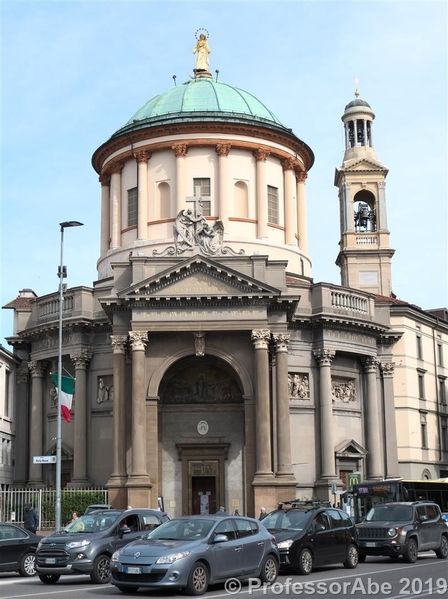
Whilst many parts of the lower city are visually appealing and well worth exploring, it is the upper town which contains Bergamo's medieval jewels. You can get there by a funicular railway, local buses, or – if you feel energetic – on foot. The most direct footpath will take you up to this point:
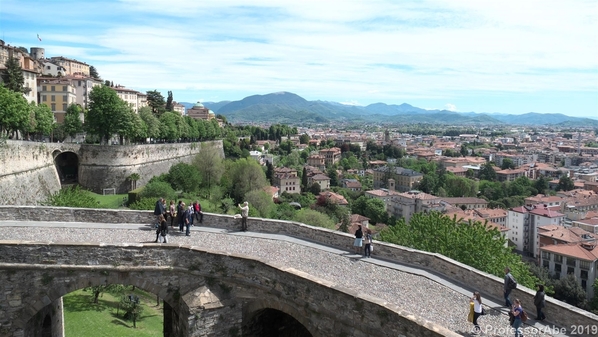
The defensive walls you can see in the photo surround the upper city. They were constructed in the second half of the 16th century, when Bergamo was under Venetian control. Along with other fortifications built by the Venetians in locations around the Mediterranean, the walls were declared a UNESCO World Heritage site in 2017.
From this part of the walls you get fabulous views of the lower city and the surrounding countryside, but it still takes a good 15 minutes or so before you reach the central parts of the upper town.
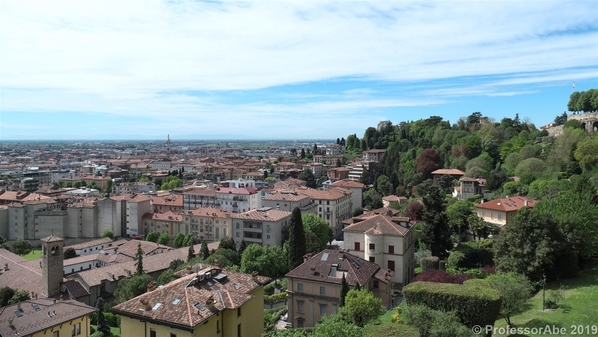
At the very heart of the upper town lies Piazza Vecchia – the Old Square – which was once described by the architect Le Corbusier as the “most beautiful square in Europe”. I personally would not quite go along with this verdict, but it certainly is a very nice square. The white building, incidentally, was Bergamo's town hall until 1873. It now houses a library.
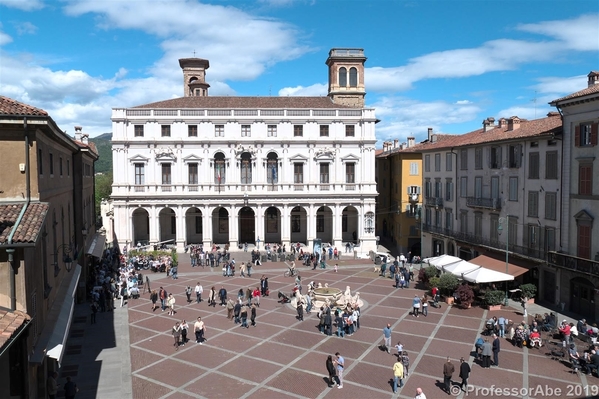
Below is a close-up of the ('Contarini') fountain in the centre.
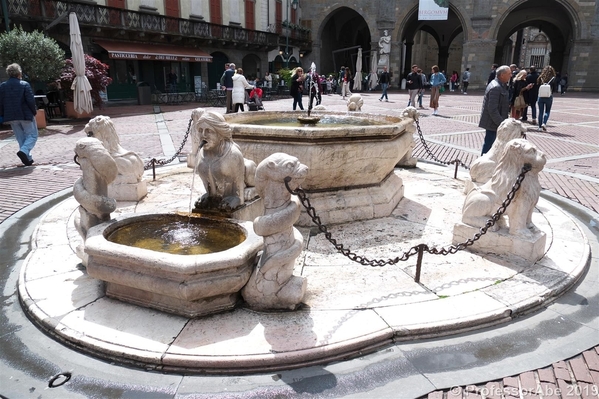
On the opposite side from the old town hall lie the Palazzo della Ragione, dating back to the 12th century, and the civic tower, the 'Campanone'.
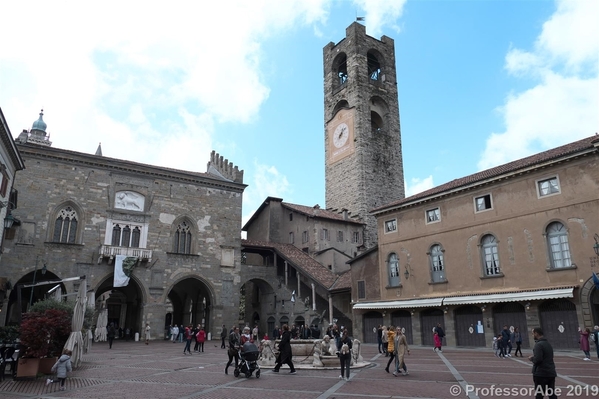
The Palazzo was the first town hall of Bergamo and is said to be the oldest in Italy. Underneath its arches is an interesting sun dial from the 18th century. The 'satellite dish' in one of the clues forms an integral part of this clock. In the photo below you can see the circular shadow cast by the disk and just about make out the position of the hole in it, which is the marker. The labels on the ground here refer to the months of the year and you can see that the marker points to the last week of April – more precisely the 26th of April, which (my camera tells me) was the date on which the shot was taken.
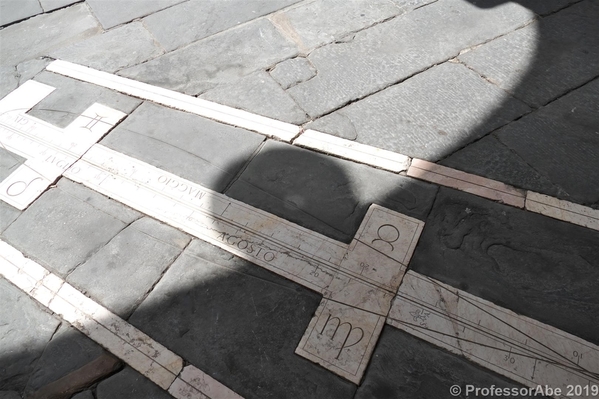
The science behind the clock – and it is not just a calendar – is quite complex and I have not been able to find much material about its workings on the web. The best article (in English) is perhaps this one: http://www.lafavre.us/sundial/
The small square behind the Palazzo della Ragione is the Piazza Duomo, where you find the impressive Cappella Colleoni, pictured below.
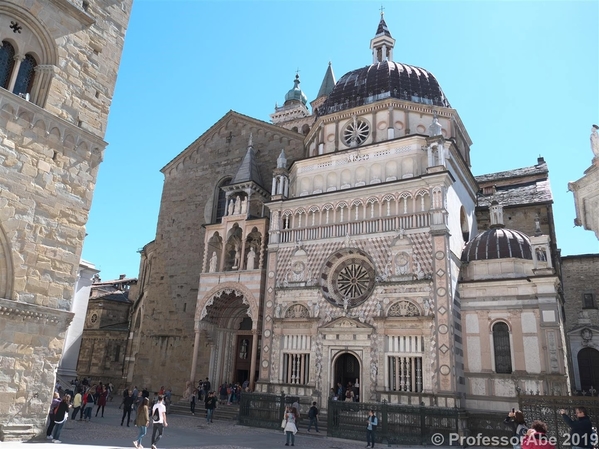
It dates from the late 15th century and was built for one Bartolomeo Colleoni, a military leader, as a personal shrine. It houses his remains.
The Colleoni chapel abuts a church, the Basilica of Santa Maria Maggiore, and almost hides it from this angle. The church entrance is the small portico on the right of the photo above. It is flanked by two red stone lions, one of which is pictured below.

The narrow entrance gives the false impression of a small church – it is actually quite large and amongst the most ornate we have ever encountered. The next three photos show parts of the interior.
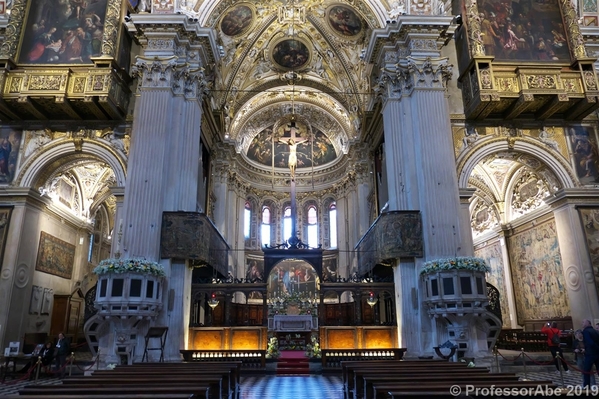
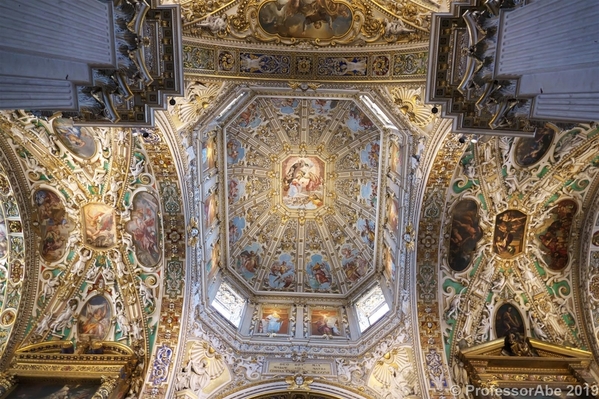
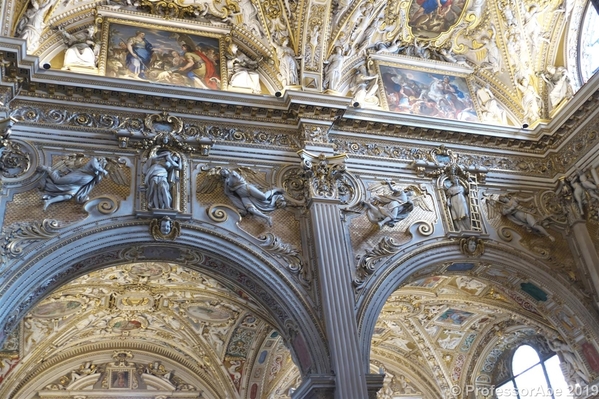
The décor in Bergamo's Cathedral, which is situated at the far end of the square, looks almost austere in comparison.
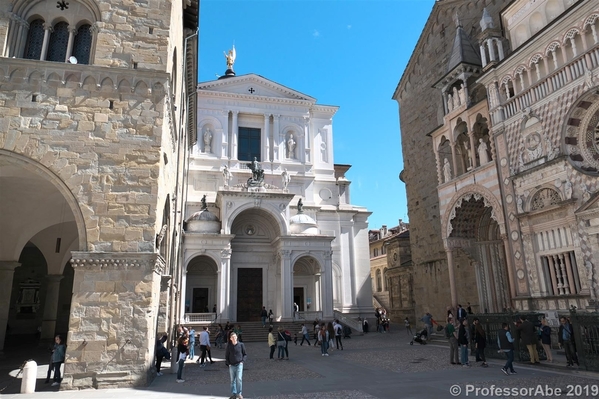

The Cathedral is dedicated to St. Alexander of Bergamo, the city's patron saint. A golden statue of the saint sits atop the Cathedral's dome (- it is visible in the exterior shot above and also featured in one of the clues).
At the other end of Piazza Duomo is the unusual octagonal 14th century baptistery pictured below.
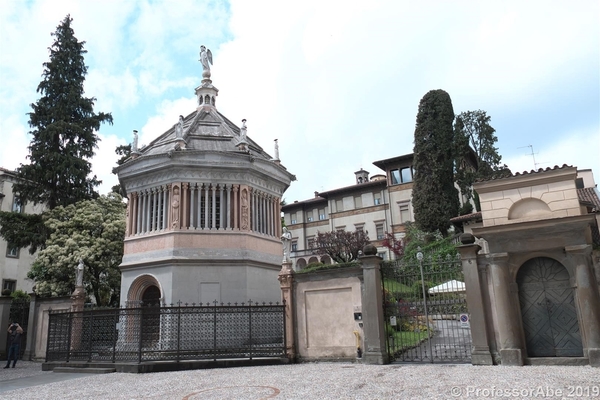
We spent quite a bit of time wandering around the central area of the upper town, exploring the side streets and alleys. There are lots of interesting sights, such as the Romanesque stone church (Il Tempietto), dating back to around the year 1000, and the old wash house (Lavatoio) which are shown in the next two photos.
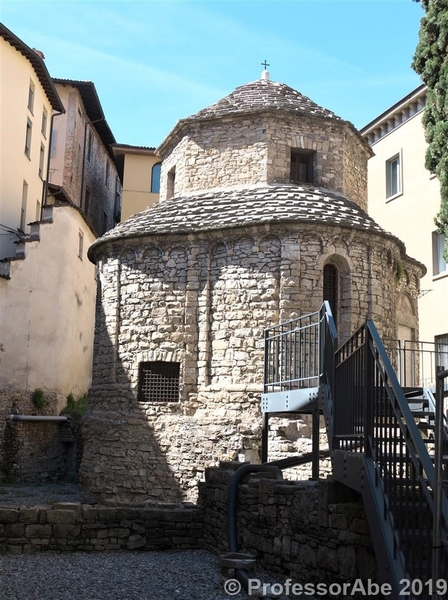
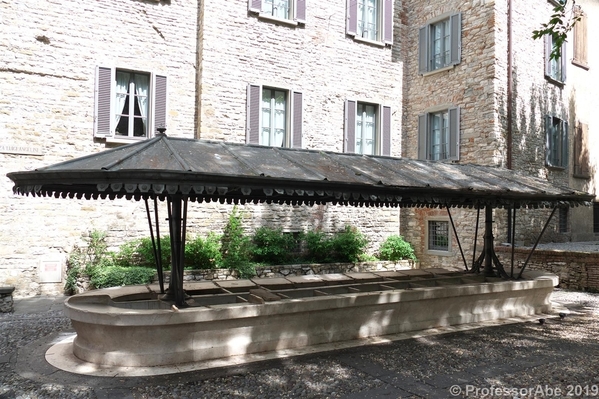
The Torre della Campanella stands at the northern end of the upper town.
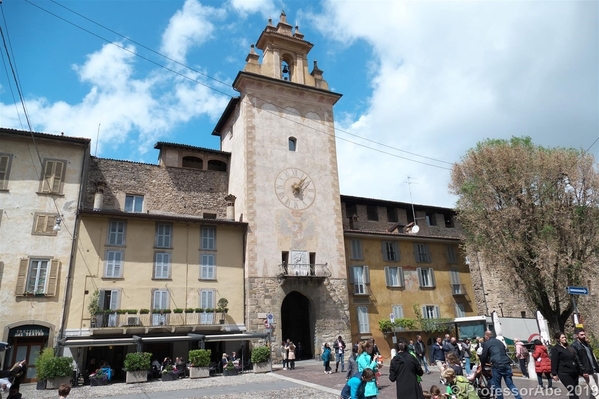
Walking through its arch and another couple of hundred yards in a northerly direction takes you to Bergamo's Lorenzo Rota Botanical Garden.
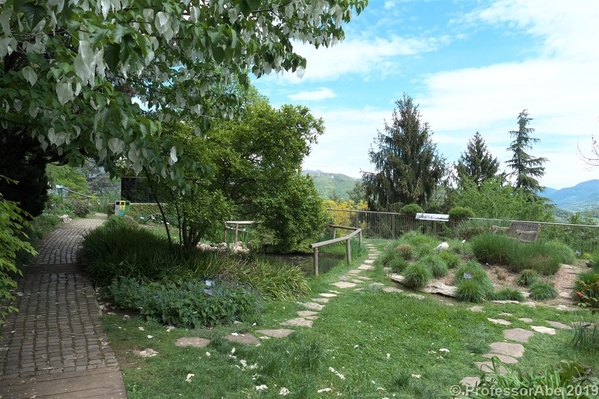
It is not the most impressive botanical garden you have ever seen, but it provides a tranquil sanctuary from the busy centre. The photo used for the very first puzzle clue was taken from up here.
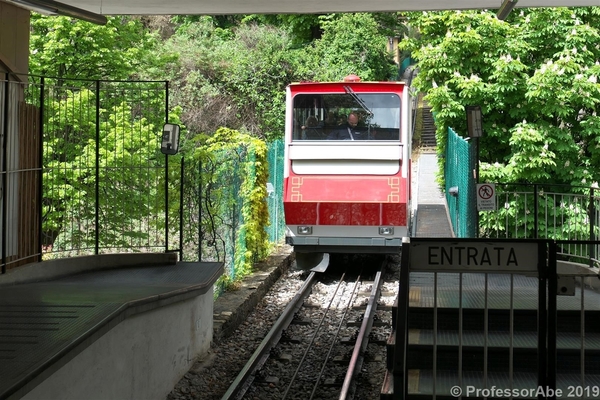
Near the garden is the base station of another funicular railway. This one takes you further up, to the hilltop Castello di San Vigilio. From there you get good views of the upper city in particular (– it had turned a bit hazy when we took our photos here)
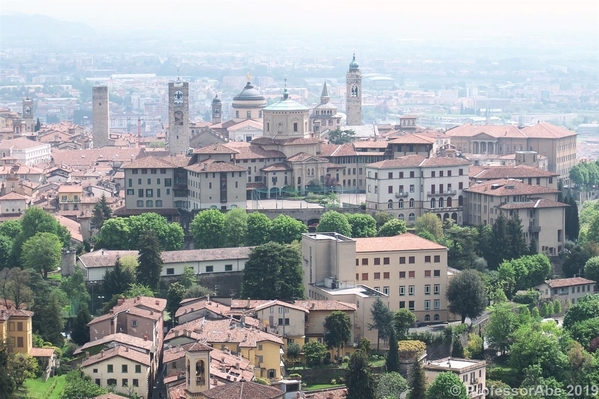
Bergamo's upper city also has a second castle, the 14th century Rocca di Bergamo. Since 2004 it houses the city's historical museum.
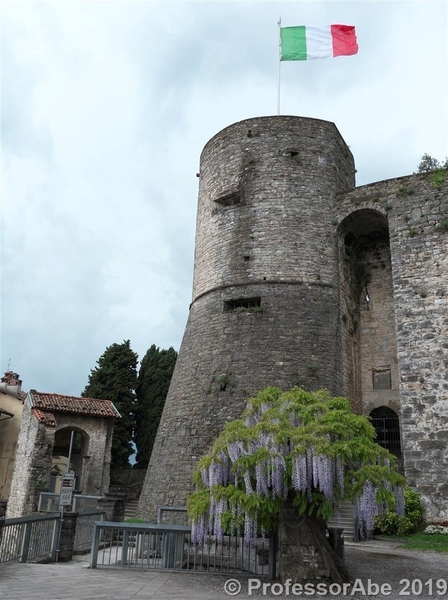
No article about Bergamo would be complete without a mention of polenta. The city regards itself as the polenta capital of the world, and with some justification. For example, we had never before seen a polenta take-away.
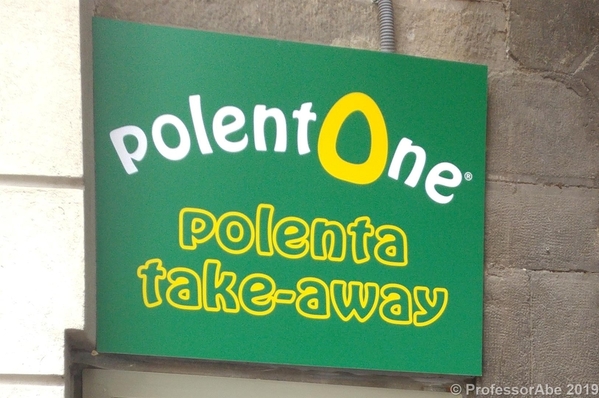
Bergamo's most famous sweet is pictured below. It is meant to resemble a traditional dish of polenta with a small bird on top.
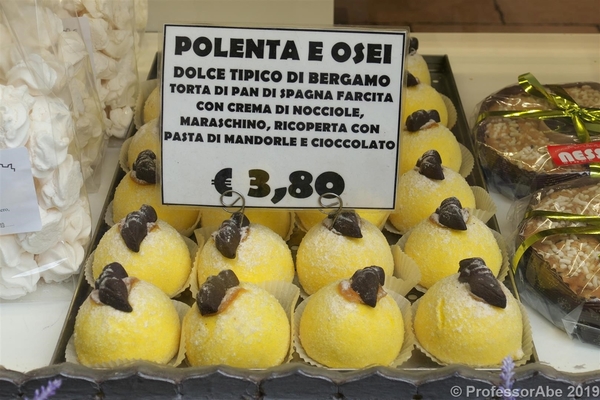
At its centre is a sponge cake and the 'bird' is made from marzipan. It is very rich and extremely sweet, so if you want to try it – and it is definitely worth it – go for a small one.
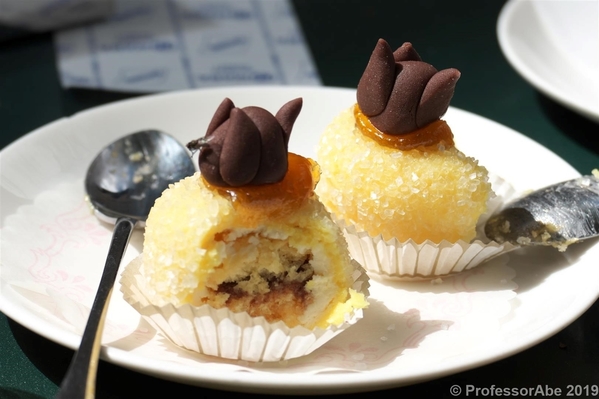
(I have just noticed that a fly was sharing mine, which was the one on the left of the photo!)
The Bergamese have developed quite a few variations on the theme of polenta and we did our best to sample as many of these as we could. Below is a picture of some delicious polenta gnocchi in a rich cheese sauce.
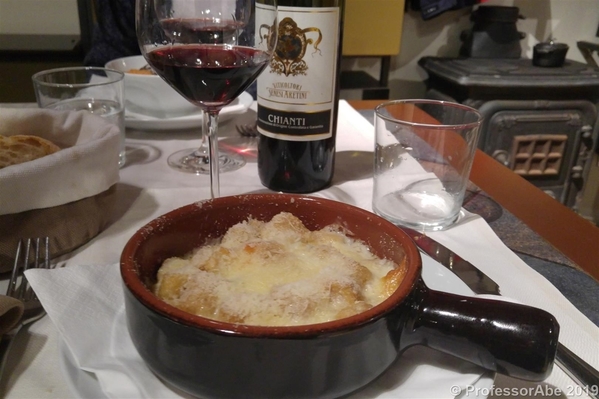
The next shot shows polenta with baby octopus (in the foreground) and with a creamy game stew (on the far side of the table).
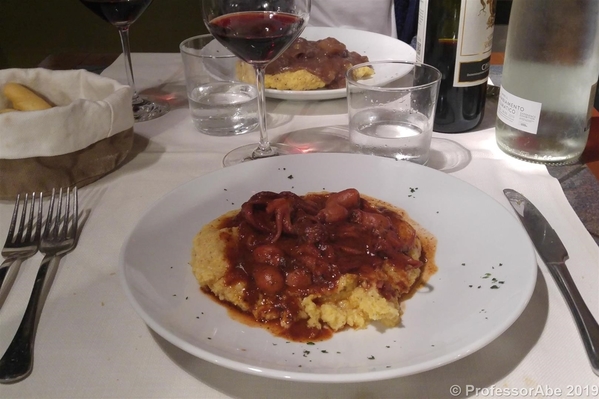
Sometimes there was the option of having a local cheese mixed in with the polenta, which worked extremely well in some dishes.
Our favourite place for dinner is shown below. It is located in the lower town (just a hundred metres or so from the apartment we had rented) and offered superb food and wine at quite reasonable prices. The service was also very friendly and efficient – what more could you ask for?

One night we left it too late and all the tables here were either taken or reserved and we had to look for an alternative. We found a good pizzeria just up the road. My pizza (in the foreground of the next photo) was stuffed with ricotta, so that the cheese oozed out as you cut into it. It wasn't the first time we had come across that, but it was very well executed.
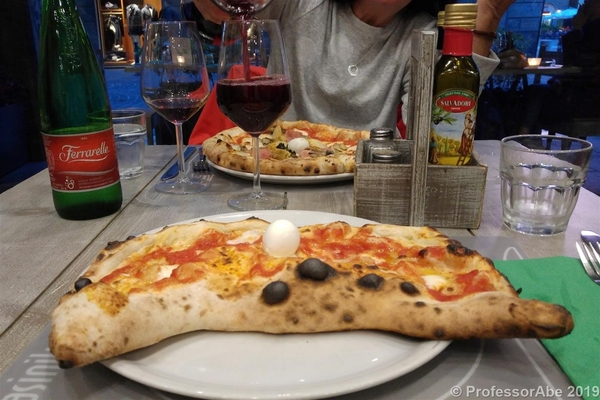
It was also a friendly and welcoming place and we thanked the chef afterwards.

If you believed that Italy was a country of permanent blue skies and sunshine, here is a photo to disabuse you of this notion. During this spring and early summer the north of Italy experienced a succession of violent storms.
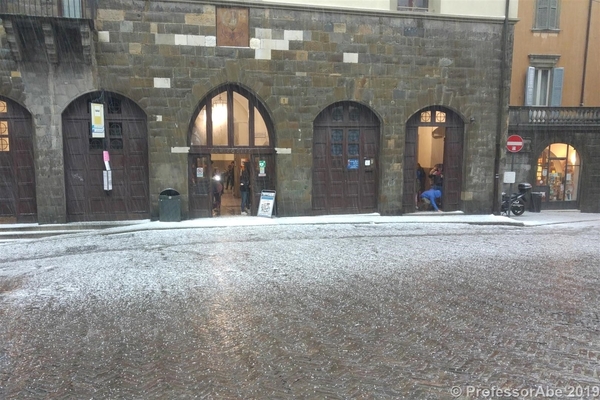
We were lucky to have sought shelter in a cafe just before it started and were able to watch this hailstorm without getting wet. The hail stayed on the ground for several hours afterwards.
Finally, a money-saving tip: Bergamo's public transport company offers a 72-hour tourist ticket covering the whole network (including the funiculars) at a mere €7 per person. It is a real bargain.
Italian trains also are comparatively cheap. For the first time on a trip to Italy, we relied entirely on trains to make our way between the various places we wanted to visit. They turned out to be uncrowded and utterly reliable. Every one of them was punctual to the minute, both on departure and arrival – an unusual and unexpected experience if you come from Britain!

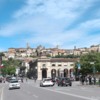



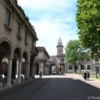










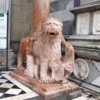




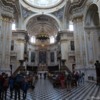













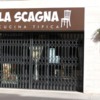

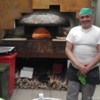

Comments (3)